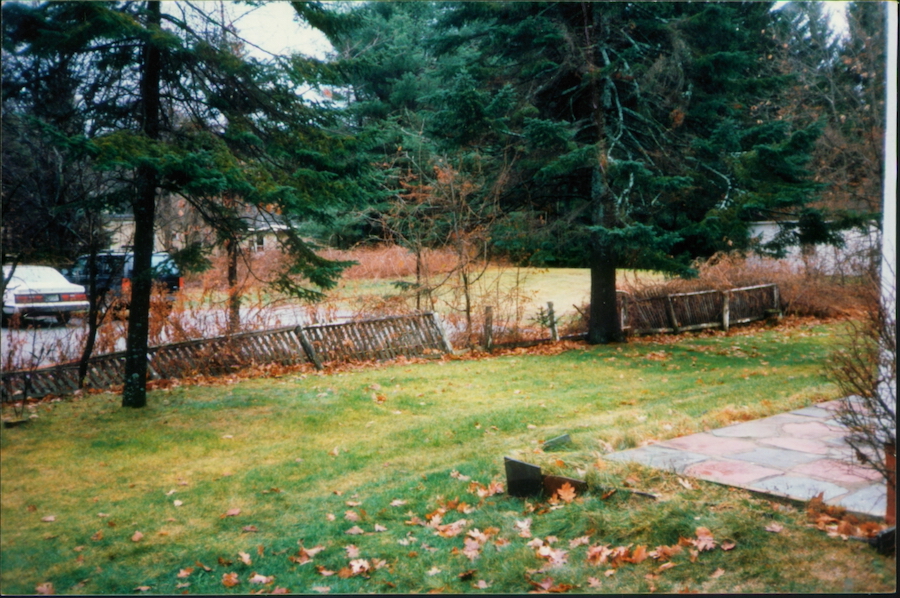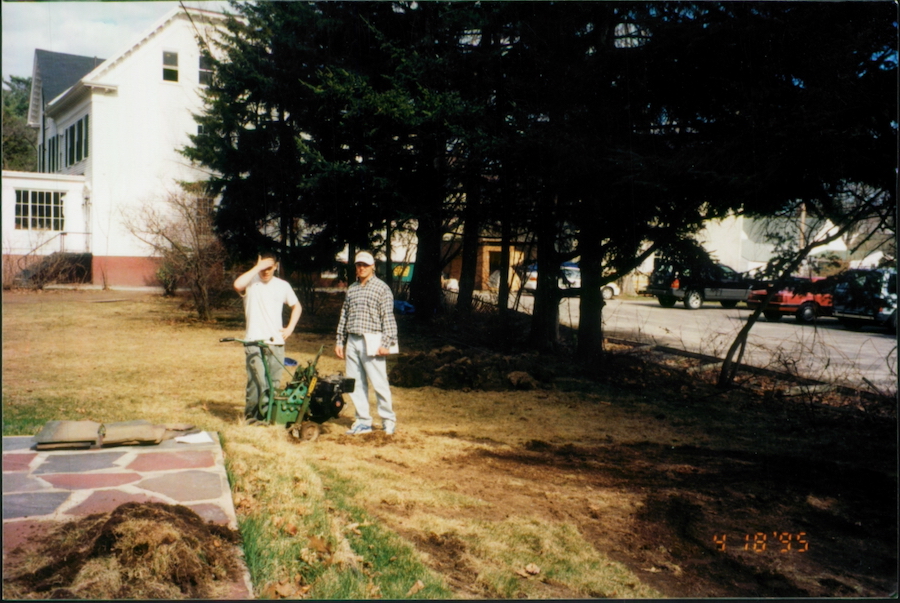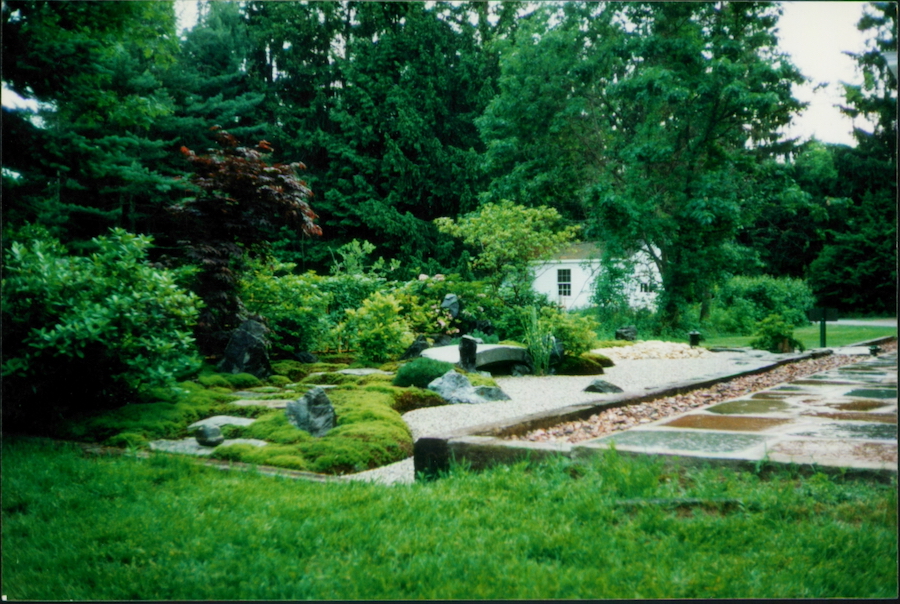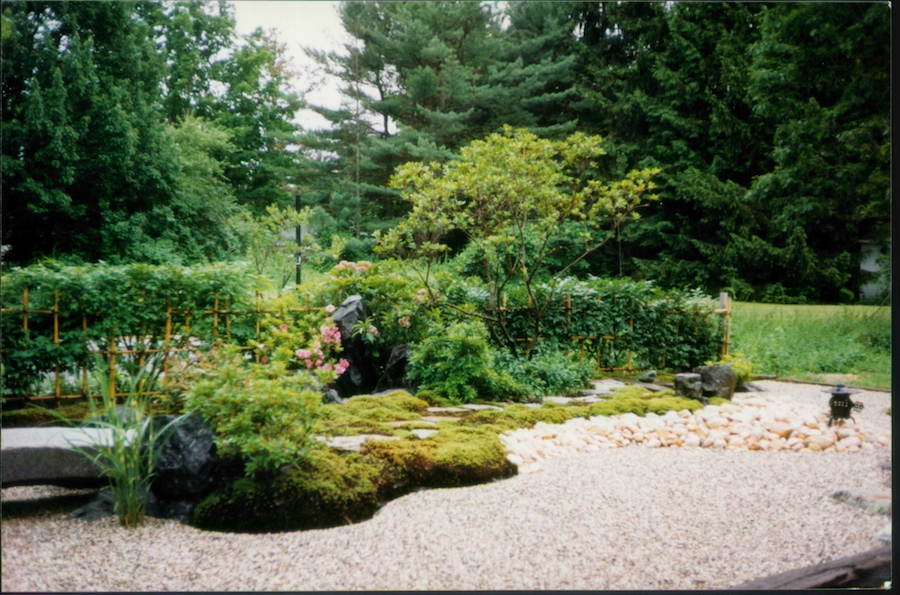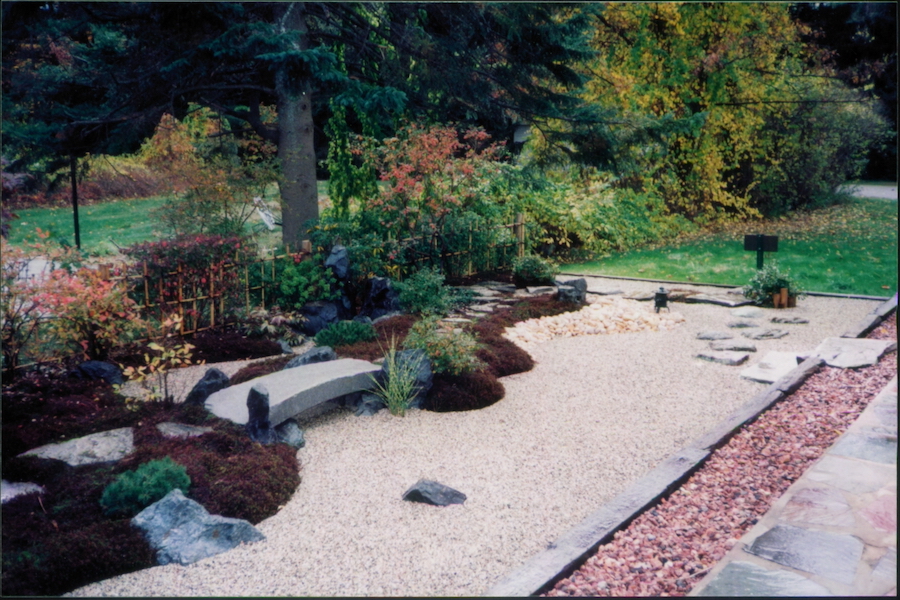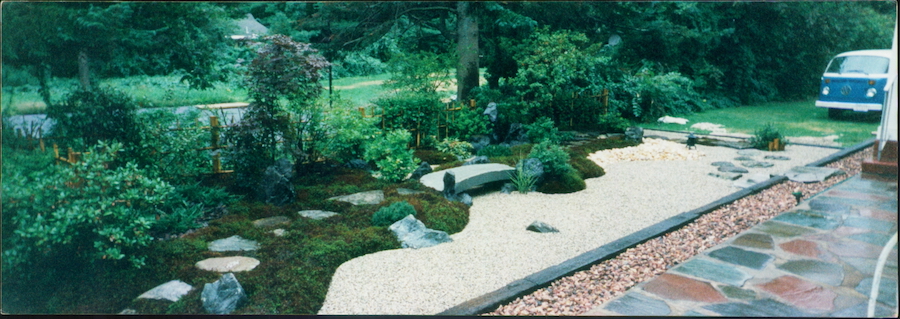A 1995 Honors Project with a Long, and Vibrant, Shelf Life
By Rebecca GoldfineTwenty-seven years ago, when Nate Cormier ’95 was a senior and enamored with Japanese gardens, he decided to build one behind the Asian Studies building for his honors project.
These days the small patch is not as well-tended as it once was by a dedicated crew of local gardeners. Despite this, each May the magenta blooms of the rhododendron reliably burst open, creating a vibrant border wall with a halo of pollinators. Small green shoots spring up throughout the garden floor. The shrubs thicken, forming a protective screen for a contemplative space set apart from the surrounding asphalt parking lot.
Standing on the edge of the garden on a warm spring day, Vyjyanthi Selinger, the Stanley F. Druckenmiller Associate Professor of Asian Studies, explained why the space "is so meaningful to the Asian Studies community." The plot lies just outside her office window.
"Whenever we step out of our offices, we have this beautiful view. And there is visual interest wherever you look. I am not a gardener, but have grown to appreciate the visual variety it has," she said. Asian Studies' open houses are always held in the garden at the end of the year for students and their family members, she added. "It is the perfect setting to conclude our send-off for Asian Studies students."
When the department moves its location next year, into Kanbar Hall, she hopes the College will preserve the garden or recreate it nearby.
“He had a really powerful question for me, and it's something I find a lot of liberal arts students at some point have to wrestle with. He asked me, 'Do you want to study gardens or do you want to make gardens?'”
—Nate Cormier ’95
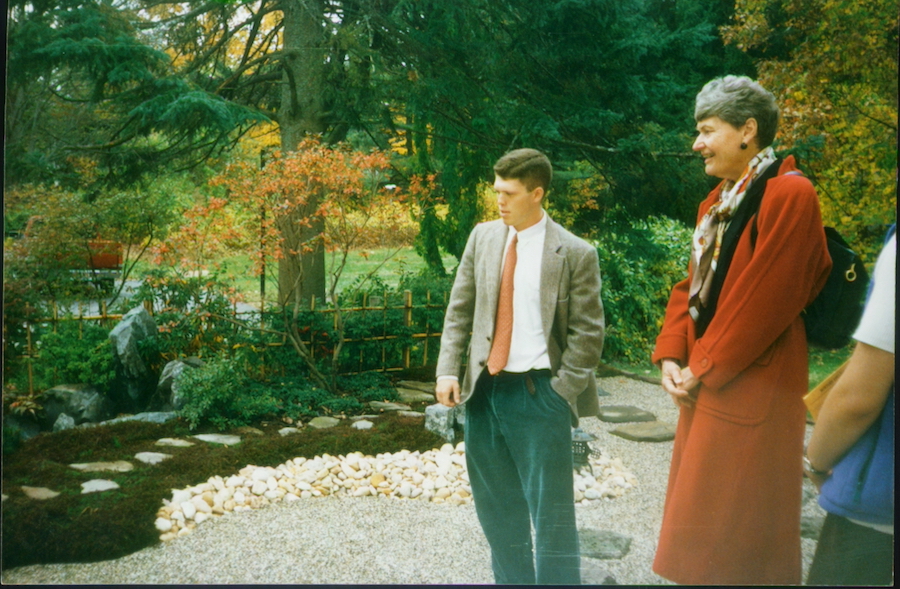
While the garden project at Bowdoin was the culmination of his undergraduate studies, Cormier's interest in Japan began when he was a teenager growing up outside of Madison, Wisconsin. In high school, his guidance counselor urged him to take a class at the University of Wisconsin.
But by the time he got around to enrolling, one of the few remaining classes with open seats was an introductory survey course of Japanese and Chinese history.The class piqued his curiosity, and he arrived at Bowdoin in 1991 thinking he wanted to be an Asian Studies major and, perhaps, an economics minor. (He ended up doing just that.)
Recent Projects
Nate Cormier has designed parks and common spaces all over the country. Here are a few:
His general interest in Asian cultures began to home in on gardens one idle afternoon during his sophomore year. Cormier recalls relaxing in his fraternity house, clicking through TV channels to find a show to watch. He settled on a documentary about Japanese gardens.
"I was just totally shaken to my core," he said of the film. "You know every once in a while in life, something just grabs you." He was struck by the beauty and serenity of the places he saw on the screen. "At that point, I didn't realize how much work went into them; they looked effortless."
In fact, as he was to find out, "you'll go visit these gardens, and there's an army of hunched-over old ladies hand-pruning every day. So it's far from a wilderness, but there's that tension between something that looks wild and something that is in some way crafted by the human hand."
After studying the Japanese language for two years at Bowdoin, he studied abroad his junior year in Japan. When he arrived in the country, he sought out the chair of his university's architecture department.
"He had a really powerful question for me, and it's something I find a lot of liberal arts students at some point have to wrestle with," Cormier said. "He asked me, 'Do you want to study gardens or do you want to make gardens?'"
Being steeped in academia, Cormier had become accustomed to thinking and not doing. But, "again, it was one of those gut reactions, and I answered, 'I want to make them.'" He spent the year studying with gardeners and traveling the country to visit as many gardens as he could.
When he returned to Bowdoin, a professor introduced him to a Japanese gardener, Masahiko "Masa" Seko. Seko has since passed away, but at the time was living in Buxton, Maine, a recent transplant from Japan.
Cormier decided he would drive up to Seko's home one day to ask whether he could serve as his apprentice. In his mind he was reenacting some kind of ancient Buddhist custom, in which a young person prostrates themself at the doorstep of a monk, begging to learn from them.
But Seko was not interested. Cormier, undeterred, kept pestering him. Eventually he wore the man down.
Japanese apprenticeships, Cormier explained, whether for calligraphy or gardening, or another skill, tend to be very practical, with a clear delineation between teacher and disciple. Cormier said he remembers one time approaching Seko with what he thought was a brilliant idea.
Seko barely reacted. "He said, 'I don't need your ideas. Do what I tell you for twenty years and then we'll talk about your ideas.'"
In their time together (Cormier worked part-time during the academic year and full-time for two summers), they built gardens with Japanese elements all over Maine and New England. Cormier, who was then living next door to the Asian Studies house, began to eye the small rectangle of lawn behind the department.
He proposed to his professors that he design and build a new garden as part of a senior-year honors project. But without a large budget (he had just $1,500), he couldn't afford much. Bowdoin groundskeepers took pity on him, and gave him their leftover shrubs. So he planted rhododendron and blueberry bushes. He chisled patches of moss away from the garden behind the president's house.
The rest of the plants came with Seko's help. "Masa was like the secret sauce and connected me with the materials. He'd tell a person at a nursery, 'Hey give this kid a good deal, you know he's doing something good.'"
The garden took three months to build, from May to August, in 1995. It is fronted with a ribbon of gravel, symbolizing a river. A trail of stepping stones leads up to and over a small bridge. Vertical rocks set into the garden look like a craggy miniature mountain range.
"One of the classic motifs in Japanese gardens is karesansui, which means a dry landscape, or waterless garden," Cormier said. Nonetheless, in karesansui the element of water is critical—it is after all, the source of the garden's life and, indeed, all life—and so is evoked with the use of sand or pebbles. The vertical stones in Cormier's garden represent a waterfall.
Cormier said his inspiration for the garden was Maine's coast. "I tried to recreate the sense of invigorating motion that I felt at places like the Giant's Stairs on Bailey’s Island. The surging of the waves, the movement of the tides, and the jagged cliffs are expressed with gravel, rocks, and moss," he said.
He began to think about working on bigger scales and in public spaces after meeting a famous landscape architect at Bowdoin. During his senior year, Cormier served on a committee helping the College settle on a master plan for the campus, including new landscaping. "I was really doing it just so I could say, 'Please don't put anything in my little spot where I want to do this garden!'" he admitted.
Yet, in the process, he got to know the designer Bowdoin ultimately hired, Carol Johnson, who inspired him to study landscape architecture at Harvard University.
"I was realizing the limitations of a Japanese garden practice in the US, where basically you would just work in people's backyards," Cormier said. "And at the same time, as my eyes were opening to all of those principles of making spaces, I learned they could be applied in public settings and for much bigger audiences and even more impact in the world."
